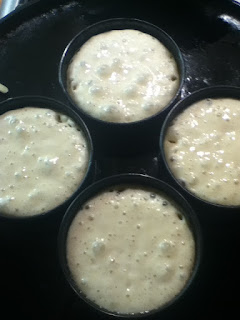Quinces
When I first started looking at old recipe books it rapidly became obvious that if I wanted to recreate a lot of he recipes I was first going to have to grow the ingredients for myself. Yes, it is possible to buy fresh marigold and nasturtium flowers, English grown quince but they are all very very expensive. Luckily for me they are turning out to be really easy to grow. This picture shows one of my treasures, a patio sized quince tree. In the foreground are some of the naturalised marigold flowers that are gradually taking over the my garden.
Recipe books from the seventeenth century include a lot of recipes for quince. I guess that these trees must have been relatively recent introductions and so house wives were busy swapping recipes to use up the large amount of fruit that a mature tree produces.
These recipes though all use a lot of sugar and in the case of the one I have discussed below, gun tragacanth. Both of these were expensive ingredients. Yes, the 16oos saw the proliferation of sugar refining factories in London and slave labour in the West Indies made sugar even more affordable but it was still a very expensive luxury. As for gun tragacanth, this is a powder made from the gum of a tree in the Middle East. Today I had to pay £6 for a tiny weeny jar, about 2 teaspoons worth, imagine what it mush have cost a few hundred years ago.
I bought this tree two years ago now and this is the fits year I have had fruit and I was very excited to try some of my recipes out. Unfortunately, I left them on the tree too long and only actually picked them when my children knocked some of them off. On the surface they look lovely but when I cut them open they were really quite brown inside.
This is the danger of growing unfamiliar produce. However, when I chopped them all up there was a very definite difference between brown bits that were rotten and brown bits that were just brown. Quinces are pome fruits, in the same family as apples and pears, so they do go brown when exposed to the air for any length of time.
I decided to carry on regardless and see what I could do. with only 5 fruit and some of that too brown to use I did have a lot of options. I opted to make the quince paste recipes from Elinor Fettiplace's cookbook, published and annotated wonderfully by Hilary Spurling.
Ingredients
Quince (English grown ones are not ripe, this recipe may not work with imported, ripe quince)
Castor sugar
Gum tragacanth
Method
Weigh out the quince fruit and put it in a food processor with equal quantity of sugar. Process until you have a smooth pulp. I used granulated sugar and I think that next time I will use caster sugar.
At this point you have a sloppy mixture.
Drain it through a sieve into a jug (keep the syrup for other recipes, such as adding to apple jelly).

Now is the guessing bit.
Make up a mix of gum tragacanth. For each pound of sugar used you will need about 1 teaspoon of gum tragacanth. Mix the powder in about 2 tablespoons of rosewater. If you can find it, it does add a lovely fragrance to your cooking. If you cannot find it then you could use apple juice, the strained juice from the quinces or even tap water.
This is the first time I have used it and it was a bit strange. The gun does not mix well into the rosewater and I was left with white lumps that really took some mixing to get rid of. In the end I just did the best I could and then mixed it into the quince paste.
The original recipe says that you should work the quince mix until you get a workable paste that you can roll out and stamp shapes in. It does also says that if the mix is too runny then pour it into shallow dishes and leave it by the fire to dry.
My mix came out very runny indeed. I poured it into an earthenware dish and left it on a trivet on top of my wood burning stove. Unfortunately it got too hot and by the time most of the mix was thick enough and dry enough to remove, a good quarter of it had burnt onto the bottom.
When I took it out of the dish it was still very sticky so I then put it into a dehydrator that I borrowed from a neighbour.
Then followed many many hours of dehydrating until I was left with a sticky and crunchy little sweet.
This sweet does taste very nice indeed. However, it ha taken a lot of power to make it. Like so many recipes from the past, and in this I include the fairly recent past as well as recipes from the 17th century, they assume that you have a fire going all the time and a steady, low heat source.
Recipes like this were relatively easy for them as they had the heat available. Today we have to be a bit more ingenious. If you have an Aga style oven then these recipes should be no problem. Similarly, a good, warm airing cupboard would also work but a little more slowly. If, like me, you have a combi boiler and your airing cupboard is now just a vaguely warm place with some hot water pipes running through it then you need to use your oven on a very low heat or a dehydrator. Both of these options get very expensive.
Links
https://en.wikipedia.org/wiki/Tragacanth
https://en.wikipedia.org/wiki/Hilary_Spurling
http://www.hobbycraft.co.uk/squires-kitchen-gum-tragacanth/599188-1000
http://www.amazon.co.uk/Elinor-Fettiplaces-Receipt-Book-Elizabethan/dp/0140088288/ref=pd_cp_14_2?ie=UTF8&refRID=08NRM4GF07A3GY858X60

































